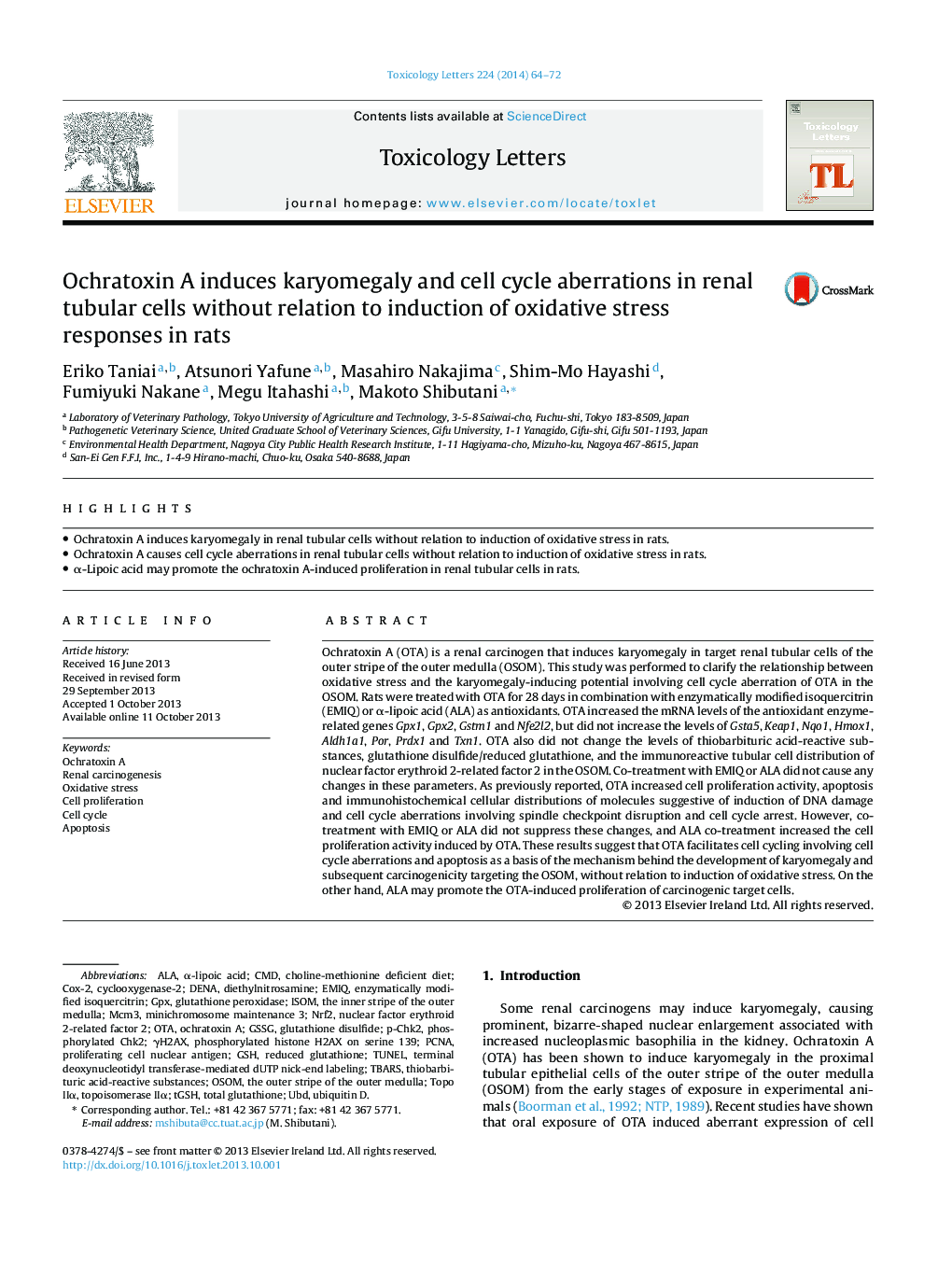| Article ID | Journal | Published Year | Pages | File Type |
|---|---|---|---|---|
| 2599115 | Toxicology Letters | 2014 | 9 Pages |
•Ochratoxin A induces karyomegaly in renal tubular cells without relation to induction of oxidative stress in rats.•Ochratoxin A causes cell cycle aberrations in renal tubular cells without relation to induction of oxidative stress in rats.•α-Lipoic acid may promote the ochratoxin A-induced proliferation in renal tubular cells in rats.
Ochratoxin A (OTA) is a renal carcinogen that induces karyomegaly in target renal tubular cells of the outer stripe of the outer medulla (OSOM). This study was performed to clarify the relationship between oxidative stress and the karyomegaly-inducing potential involving cell cycle aberration of OTA in the OSOM. Rats were treated with OTA for 28 days in combination with enzymatically modified isoquercitrin (EMIQ) or α-lipoic acid (ALA) as antioxidants. OTA increased the mRNA levels of the antioxidant enzyme-related genes Gpx1, Gpx2, Gstm1 and Nfe2l2, but did not increase the levels of Gsta5, Keap1, Nqo1, Hmox1, Aldh1a1, Por, Prdx1 and Txn1. OTA also did not change the levels of thiobarbituric acid-reactive substances, glutathione disulfide/reduced glutathione, and the immunoreactive tubular cell distribution of nuclear factor erythroid 2-related factor 2 in the OSOM. Co-treatment with EMIQ or ALA did not cause any changes in these parameters. As previously reported, OTA increased cell proliferation activity, apoptosis and immunohistochemical cellular distributions of molecules suggestive of induction of DNA damage and cell cycle aberrations involving spindle checkpoint disruption and cell cycle arrest. However, co-treatment with EMIQ or ALA did not suppress these changes, and ALA co-treatment increased the cell proliferation activity induced by OTA. These results suggest that OTA facilitates cell cycling involving cell cycle aberrations and apoptosis as a basis of the mechanism behind the development of karyomegaly and subsequent carcinogenicity targeting the OSOM, without relation to induction of oxidative stress. On the other hand, ALA may promote the OTA-induced proliferation of carcinogenic target cells.
